I made the strategic error of selecting a dog breed that is hardly a logical choice for a canoe dog. That said, I’d do it all over again. Lucy is the sweetest Great Pyrenees/Newfoundland cross ever bred. She also weighs a solid 100 pounds.
I had been using a gorgeous but ponderous wood canvas canoe, which weighs just a bit less than my dog. I drive a Toyota Tacoma with big tires. Getting it off and on and off again is doable, but it’s only a matter of time before something in my lumbar area starts screaming at me. On top of that, the seat configuration doesn’t leave as much room as I’d like for Lucy to stretch out.
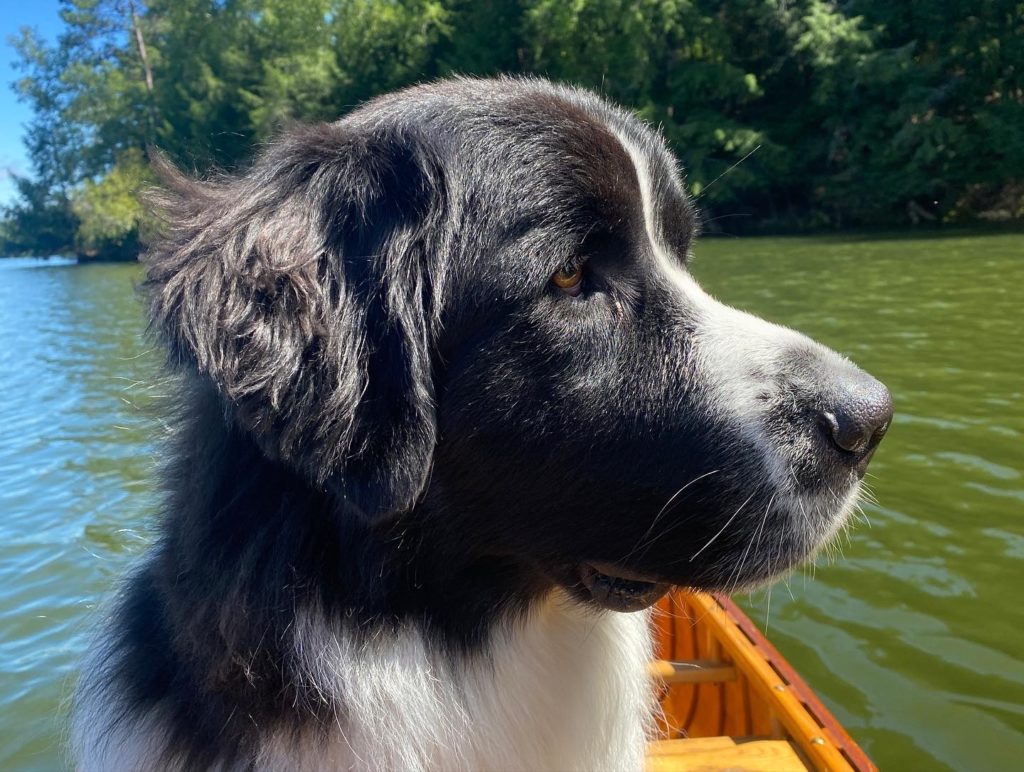
My dilemma was easily solved. Because I know a few folks who build boats.
I would build a tandem, but it would be set up as a solo. Lots of room for Lulu, and half the weight or less than the woodie.
I had been working on a canoe with Charlie, the rocket scientist at Northstar Canoes. I am not a designer, but I have lots of experience in canoes and came up with a performance profile; what the canoe should do in the situations for which it is built. Charlie took my idea and got to work, and off his lofting board came the Pearl, a sweet little sixteen footer, symmetrical and rather traditional in style. It’s a light tandem, but performs well as a solo too. Or in my case, a solo and a half.
The Pearl is a perfect boat for my application. I made an appointment and Bear at Northstar squeezed me into the schedule.
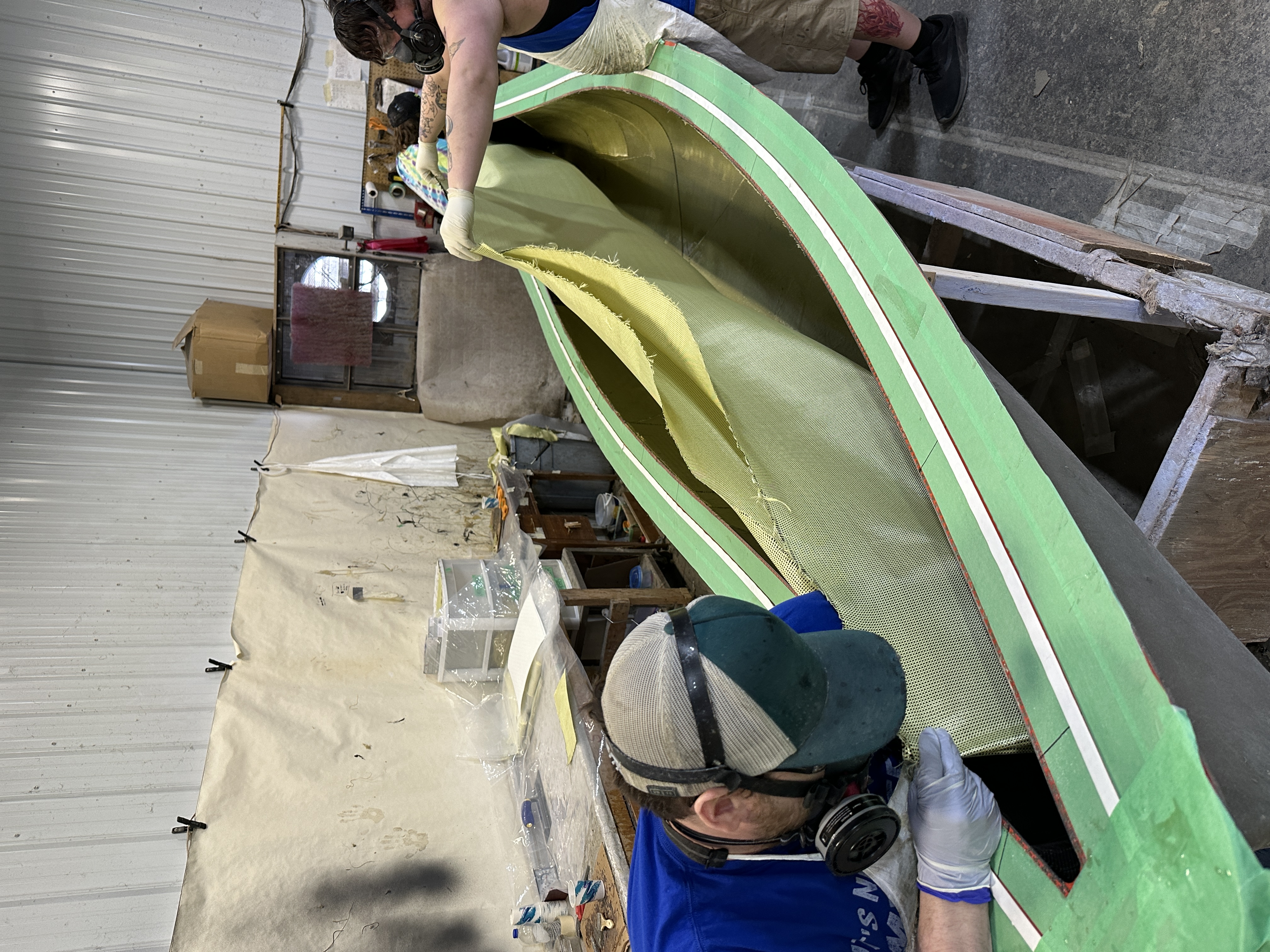
A laminated boat is constructed in several steps, and there are waiting periods. To save time, the first layer was put in the afternoon before my arrival so it could cure overnight. They call this skinning the boat.
The next morning I arrived bright and early, ready to get sticky. Truth is, if you pay attention to what you’re doing, you hardly get any resin on you at all. We placed the pre-cut layers in the mold, adding more layers where they’re needed for reinforcement. We worked quickly but carefully, and it only took about twenty minutes to complete the layers. The mold was then moved into an area where it was vacuum bagged. This technique uses vacuum to pull the layers together and squeeze out any excess resin. It’s a precise technique: too much vacuum and you pull out too much resin. Too little, and you get excess resin in places you don’t want it.
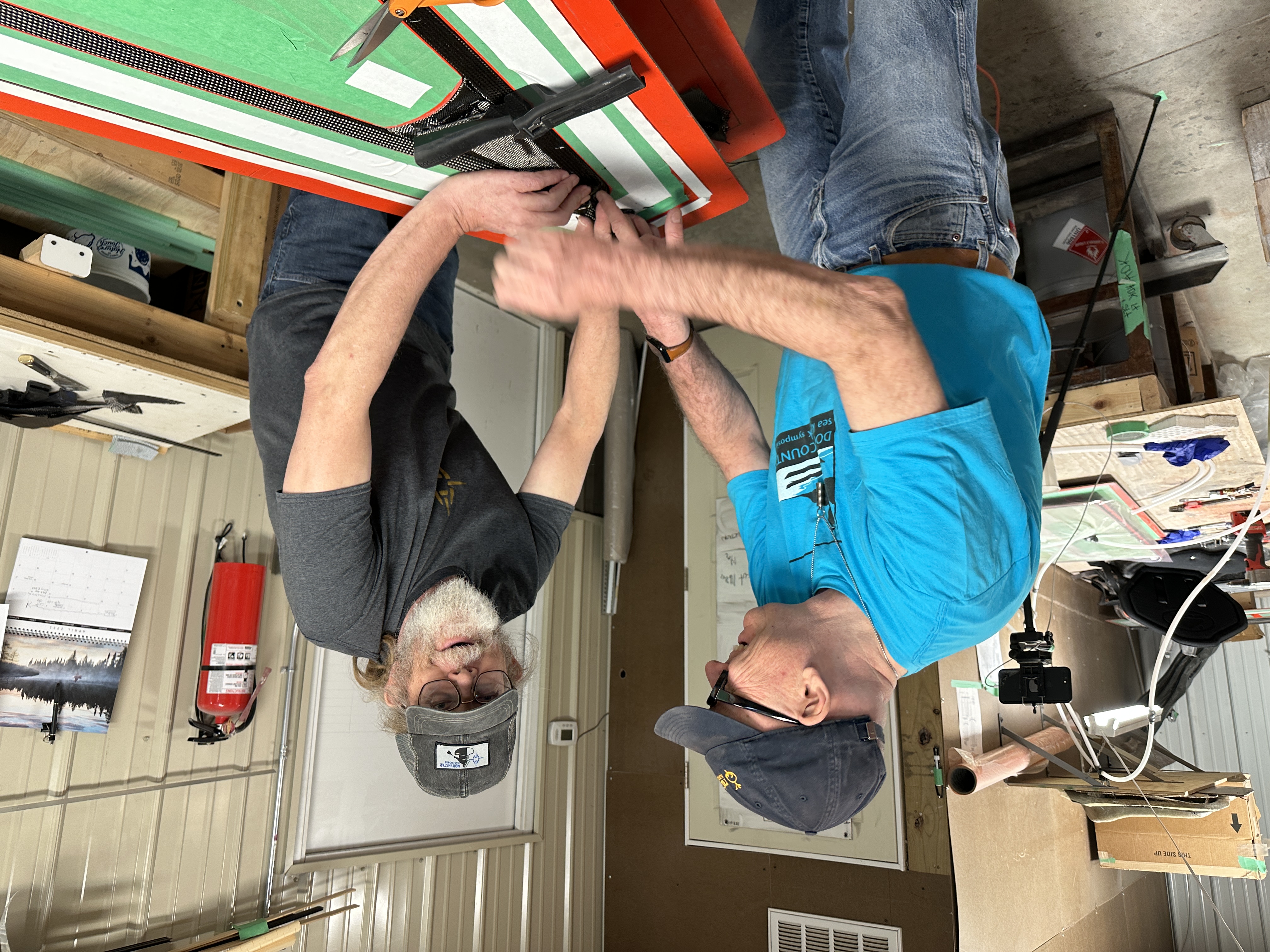
With that done, I had some time to kill, so I killed it by building boat parts with Jerry. Jerry is a character, who started building boats on the production line, but found he did well in a quieter room with more complex processes. Not that building a boat is not complex; it is. But doing resin infusion on seats and gunwales is fussy work, and a small error means you have to throw a few hundred bucks in the dumpster. He allowed me to assist on the non-critical steps and watched me like a hawk wearing reading glasses when it was more crucial. He laughed at my jokes and I laughed at his.
The next day Tony and I added the gunwales and figured out where the seat would go to balance my 200 pounds with Lucy’s 100. That made the math easy: 2 feet from the center for me. 4 feet from the center for Lucy. We poked around and found the optimal location, and started drilling holes.
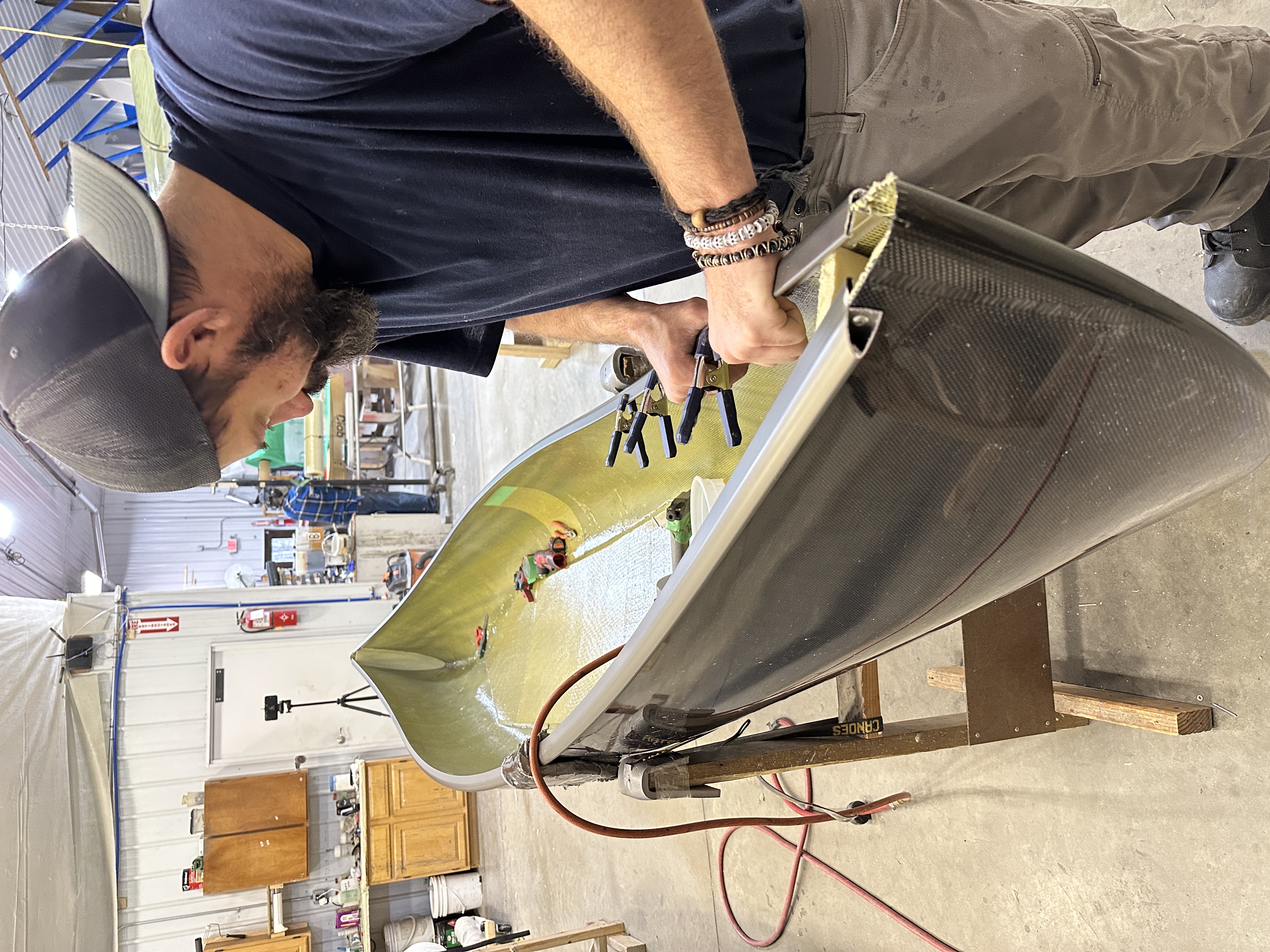
The final thing was adding stickers. I felt proud that I had a hand (two, really) in building my own boat. We hung it on the scale: 35.86 pounds. Both my brain and my back rejoiced.
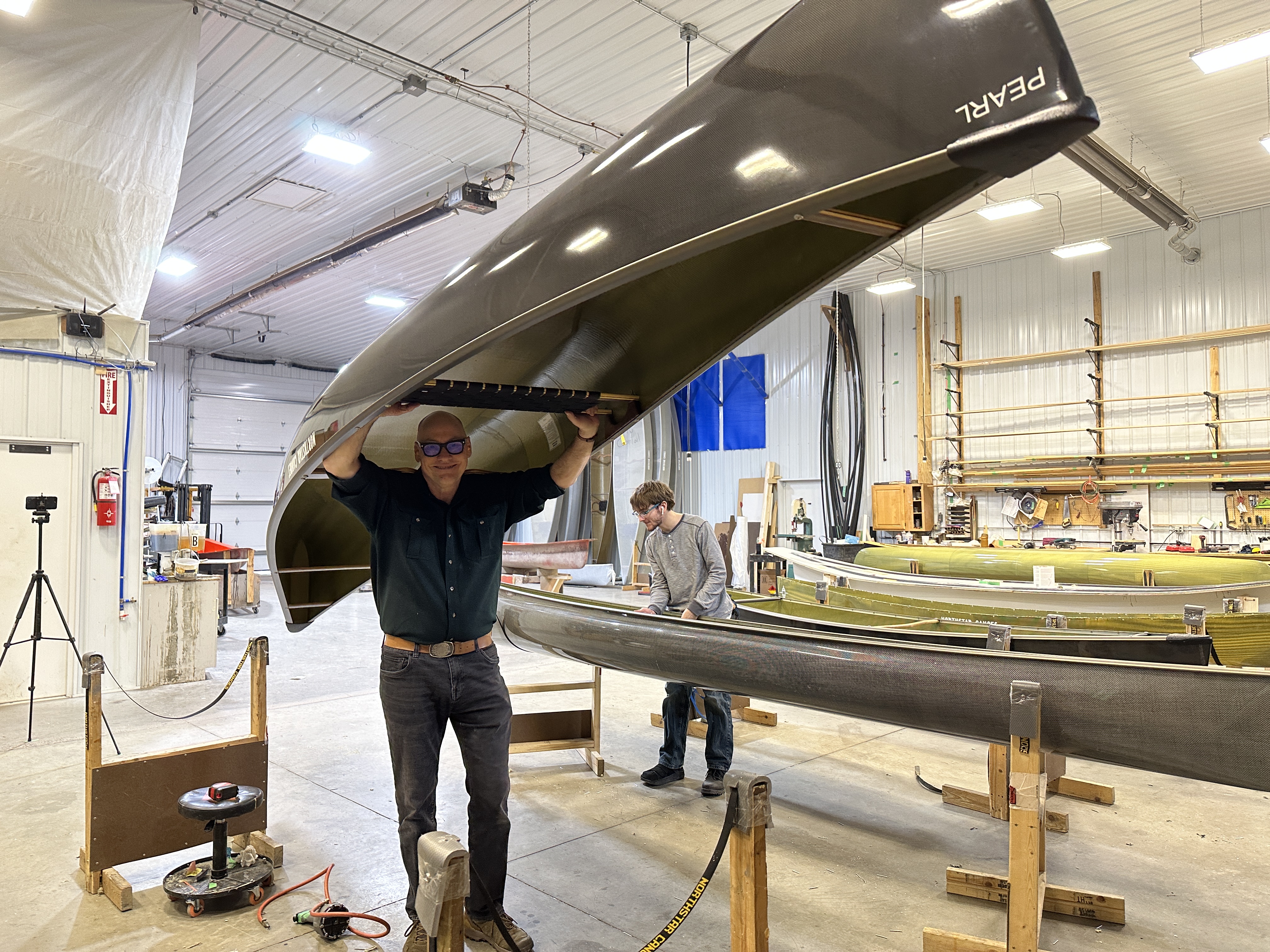
Since then, I’ve had Lucy out half a dozen times. She loves the canoe, even jumping in it while on the ground in the front yard, and even staying in it after I went in the house.
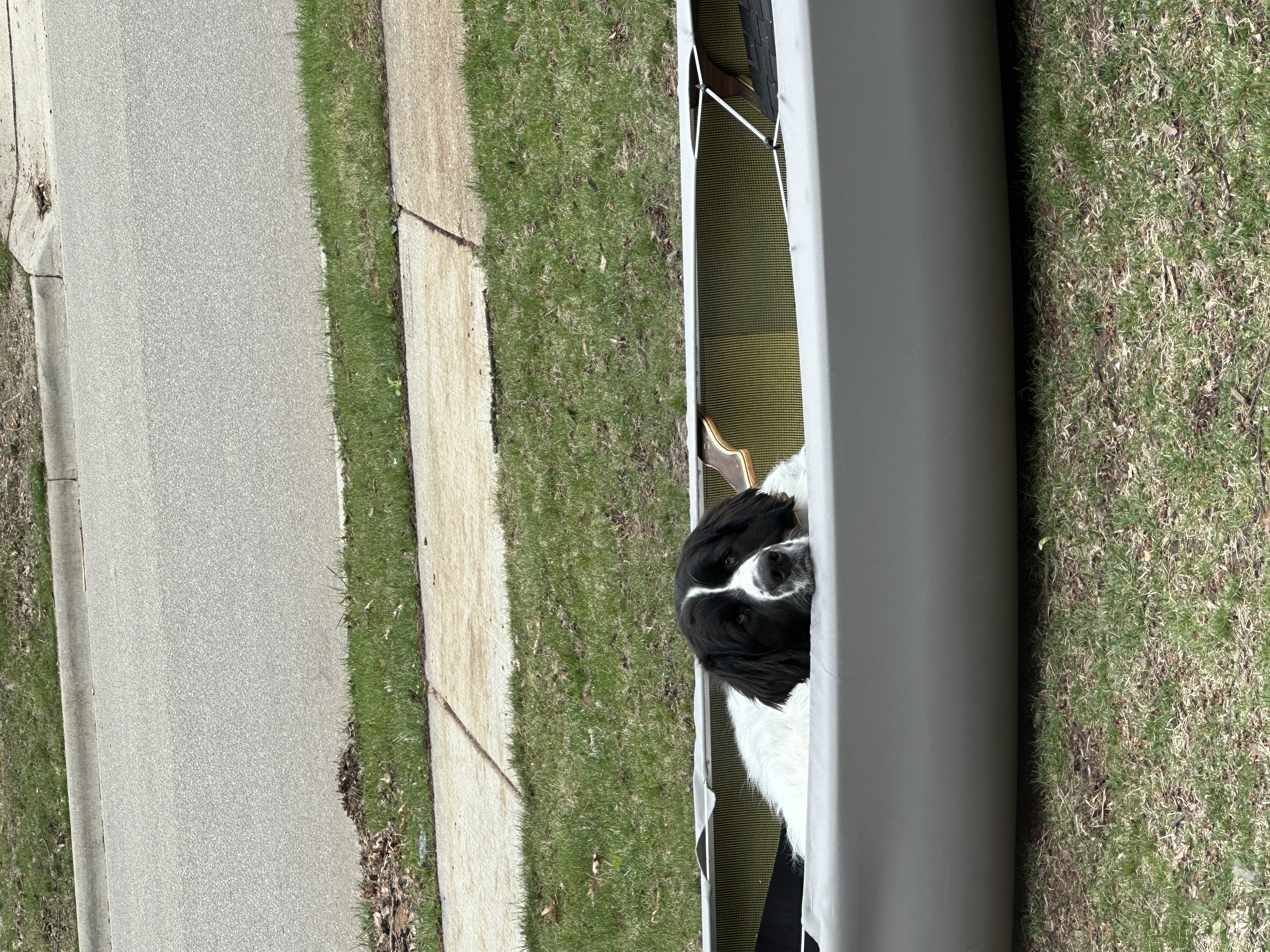
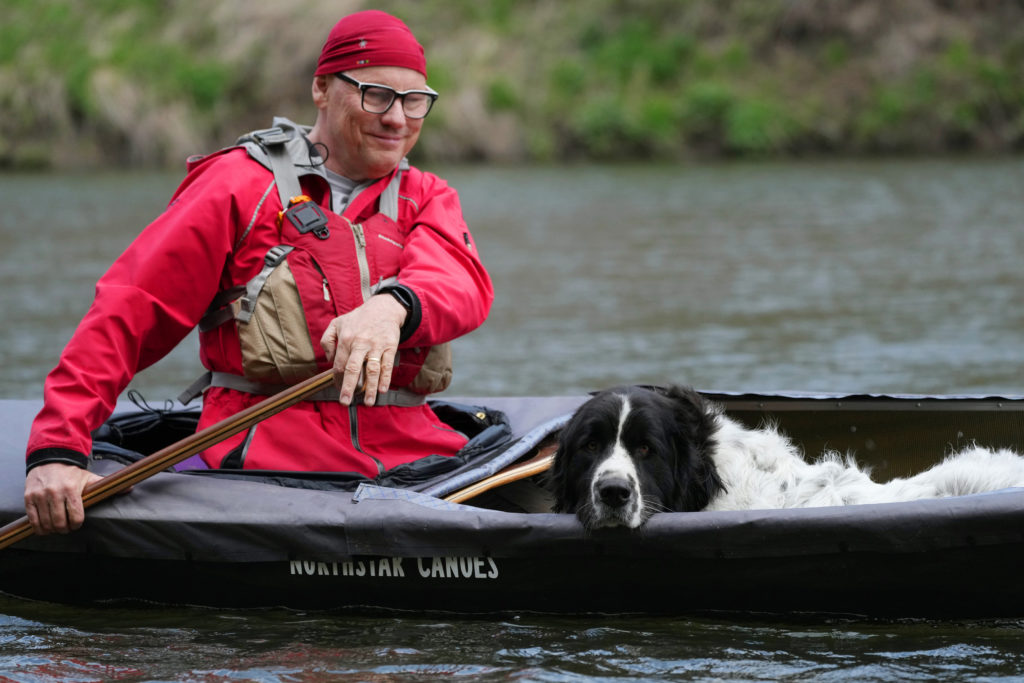
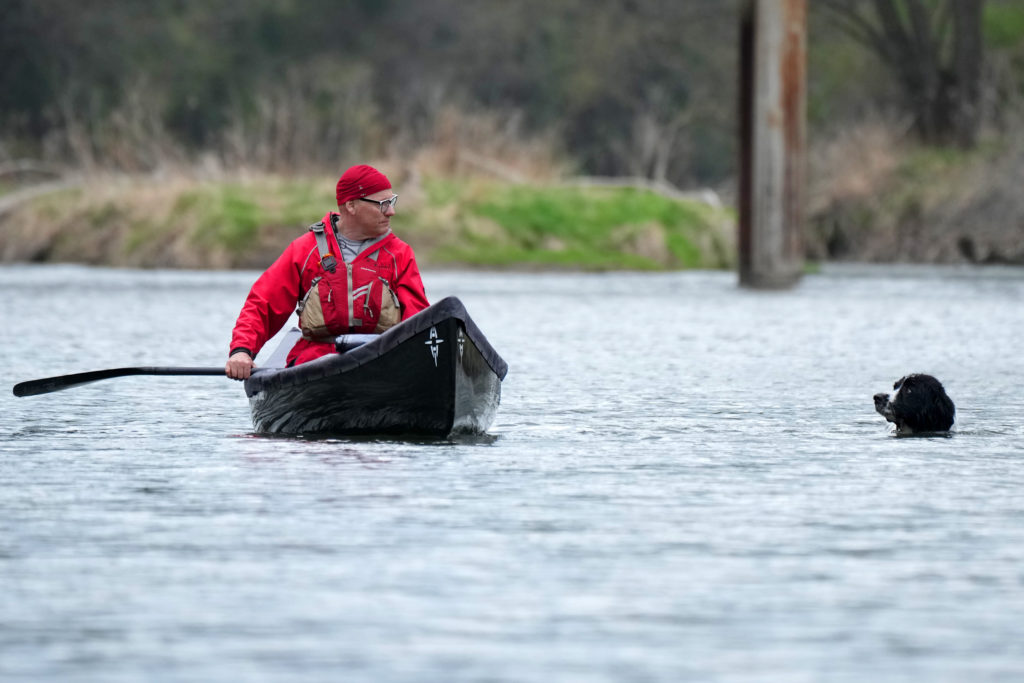
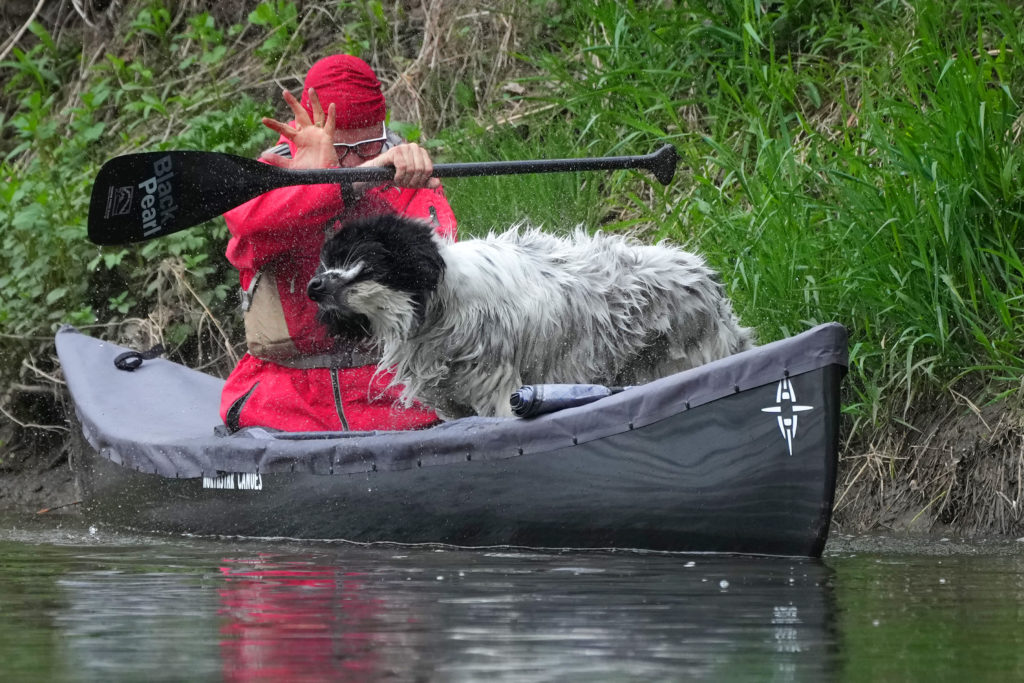
I am deeply grateful for the folks at Northstar Canoes for letting me undoubtedly slow down production. Thanks to Ted, Bear, and Charlie, and the 12 people who signed my canoe, as a sign of their skill and passion for their work, and in some way, for me, a fellow paddler.
Respectfully submitted,
Canoelover
